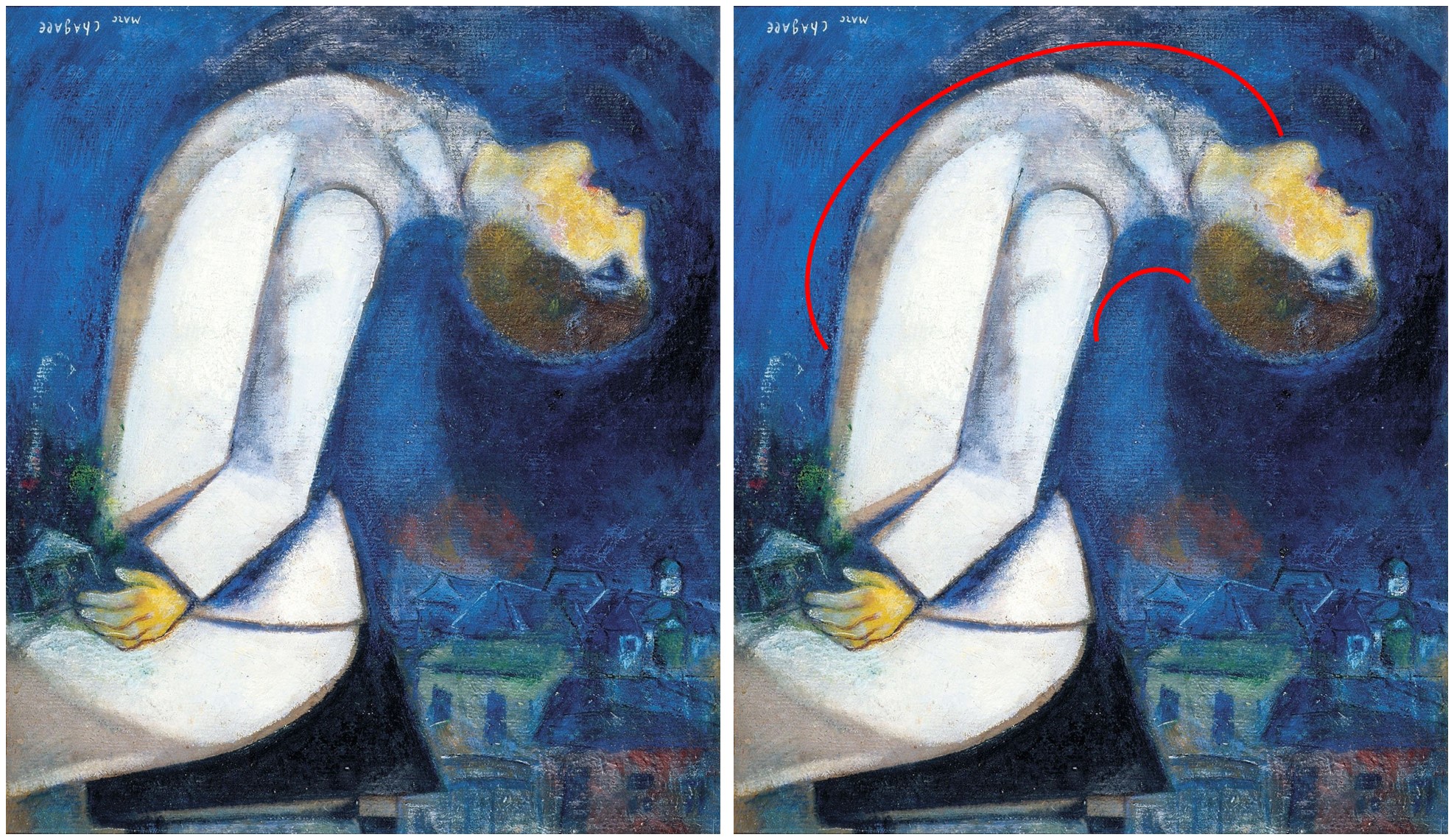Session Information
Date: Thursday, June 8, 2017
Session Title: Dystonia
Session Time: 1:15pm-2:45pm
Location: Exhibit Hall C
Objective: To propose that Marc Chagall’s L’Homme À La Tète Renversée (Man With His Head Thrown Back) could be a depiction of severe retrocollis due to Neurodegeneration with Brain Iron Accumulation.
Background: Artistic representations of medical conditions, particularly those that cause severe deformity, have been a constant in the history of art. Marc Chagall paintings depicted the everyday lives of Russians, especially the Jewish community. Among his paintings, L’Homme À La Tète Renversée (Man With His Head Thrown Back), is a 1919 oil painting that depicts a man with a strikingly exaggerated backward bending of his head and neck.
Methods: We present Marc Chagall’s original depiction of L’Homme À La Tète Renversée (Man With His Head Thrown Back), as well as an edited view with red lines corresponding to the accentuaded backwards arches of both the upper torso and the neck, leading to a posterior head-drop. We also comment on the likely diagnosis related to the possible ethnicity of the painting’s subject.
Results: Neurodegeneration with Brain Iron Accumulation syndromes (NBIAs) are a group of varied genetically-induced diseases that can affect different ethnical groups, with a worldwide distribution. Among their clinical features, one may find akinetic parkinsonism and severe forms of axial dystonia, sometimes leading to exacerbated retrocollis. By carefully analyzing Marc Chagall’s L’Homme À La Tète Renversée (Man With His Head Thrown Back) we propose that he might have involuntarily depicted a case of NBIA with severe retrocollis and bent spine. This could have been a Russian-Jewish subject that lived in a Russian village and suffered from one of the many NBIAs, possibly Panthotenate Kinase Associated Neurodegeneration (PKAN).
Conclusions: Marc Chagall’s L’Homme À La Tète Renversée (Man With His Head Thrown Back) is a possible depiction of severe retrocollis with bent spine syndrome, likely due to any of the diseases of the NBIA group, including PKAN.
To cite this abstract in AMA style:
L. Oliveira, M. Caeira, F. Germiniani, H. Teive, T. Roza, C.H. Camargo. Marc Chagall’s L’homme à La Tète Renversée (Man with His Head Thrown Back) – An Artistic Depiction of Severe Retrocollis in Neurodegeneration with Brain Iron Accumulation [abstract]. Mov Disord. 2017; 32 (suppl 2). https://www.mdsabstracts.org/abstract/marc-chagalls-lhomme-a-la-tete-renversee-man-with-his-head-thrown-back-an-artistic-depiction-of-severe-retrocollis-in-neurodegeneration-with-brain-iron-accumulation/. Accessed December 19, 2025.« Back to 2017 International Congress
MDS Abstracts - https://www.mdsabstracts.org/abstract/marc-chagalls-lhomme-a-la-tete-renversee-man-with-his-head-thrown-back-an-artistic-depiction-of-severe-retrocollis-in-neurodegeneration-with-brain-iron-accumulation/

